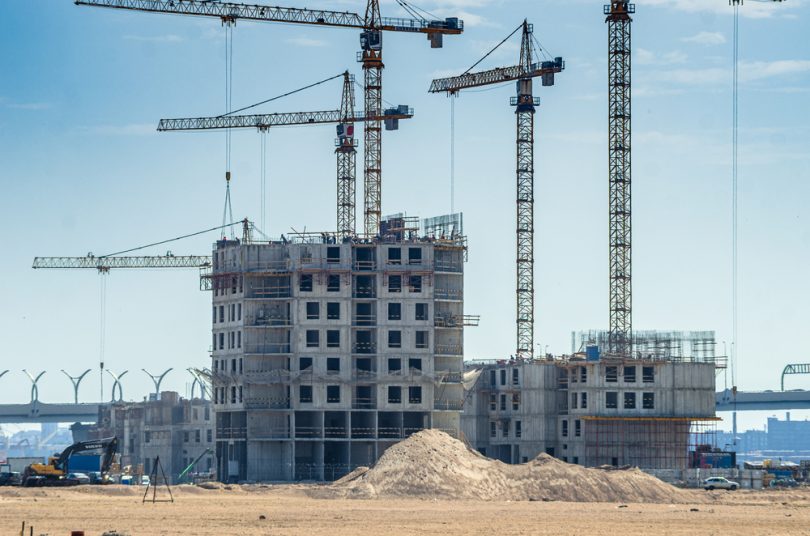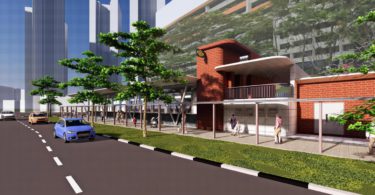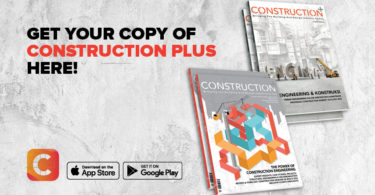By Anisa Pinatih
Due to the COVID-19 global crisis, forecasts by the International Monetary Fund (IMF) show that the 2020 real global GDP will shrink by around 3 per cent, which is 5.9 percentage points less than the 2.9 per cent growth we saw in 2019. The construction industry will experience the impact in varying degrees.
Among the challenges the industry is facing are sustained cost pressures, labour shortages due to the containment measures, and trends toward fixed-bid projects. Digital transformation could alleviate some of these issues but at the same time adds hurdles in terms of upskilling the workforce.
Also read: Building the future with prefabricated prefinished volumetric construction (PPVC)
Despite these challenges, certain construction firms are poised to potentially benefit from significant opportunities in the industry. Asia Pacific is expected to showcase the fastest global PPVC construction market growth during the forthcoming years, not only because of a rise in the number of construction activities that are already taking place, but also because of its potential in reducing manpower.
CURRENT TRENDS IN SINGAPORE
The Building and Construction Authority (BCA) says that PPVC can improve productivity by up to 40 per cent in terms of manpower and time savings—depending on the complexity of the projects—and that there has been a growing demand for PPVC consultants and builders.
BCA encourages the industry to embrace the concept of Design for Manufacturing and Assembly (DfMA), where construction is designed such that most of the work is done off-site in a controlled factory environment. PPVC is a game-changing technology that supports this concept. The lists of architectural and engineering firms, as well as main contractors with completed or on-going PPVC projects in Singapore, are growing. There are 16 architecture firms (including ADDP, CPG, RSP, Surbana Jurong, LAUD, WOHA); 17 engineering firms (such as Aecom, ARUP, Aston Consulting, Beca); and 25 main contractors.
Also read: Digital Transformation is the New Normal of Construction
CURRENT TRENDS IN ASIA PACIFIC
A high demand from the commercial and residential sectors may increase the trends of PPVC demands in Asia Pacific. In addition, the governments in numerous countries are rolling out initiatives to promote Green housing facilities. Subsidies may also be given to support the agenda. The government of Singapore, for instance, has made it mandatory to use PPVC for the housing projects on government lands. All these factors would augment the modular construction market share of Asia Pacific in the upcoming years.
Fortune Business Insights claims that the global modular construction market size in 2019 was US$67.74 billion, with the Asia Pacific market value standing at US$21.02 billion, which is roughly 30 per cent of the global market. The global trend is projected to reach US$106.22 billion by 2027.
THE GLOBAL OUTLOOK
The three largest PPVC applications in 2019 are for commercial, educational and institutional, as well as healthcare facilities, respectively in order. The remaining 20 per cent is for hospitality and others (such as residential).
Businesswire predicted the telehandlers market for construction industry from 2020 to 2024. The market growth will accelerate at compound annual growth rate (CAGR) of almost 6 per cent. The incremental growth from 2019 to 2024 will be at about US$478.74 million, with the year-over-year growth rate’s estimated at 5.54 per cent. What should be noted is that one of the key drivers for this market will be the increasing use of modular design and PPVC.
Disclaimer: Construction+ makes reasonable efforts to present accurate and reliable information on this website, but the information is not intended to provide specific advice about individual legal, business, or other matters, and it is not a substitute for readers’ independent research and evaluation of any issue. If specific legal or other expert advice is required or desired, the services of an appropriate, competent professional should be sought. Construction+ makes no representations of any kind and disclaims all expressed, implied, statutory or other warranties of any kind, including, without limitation, any warranties of accuracy and timeliness of the measures and regulations; and the completeness of the projects mentioned in the articles. All measures, regulations and projects are accurate as of the date of publication; for further information, please refer to the sources cited.
Hyperlinks are not endorsements: Construction+ is in the business of promoting the interests of its readers as a whole and does not promote or endorse references to specific products, services or third-party content providers; nor are such links or references any indication that Construction+ has received specific authorisation to provide these links or references. Rather, the links on this website to other sites are provided solely to acknowledge them as content sources and as a convenient resource to readers of Construction+











